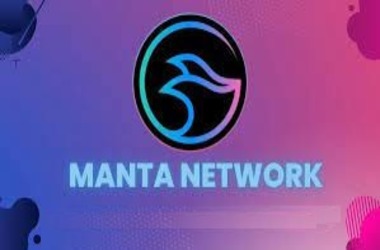

In a recent announcement, the Manta Pacific network, which had recently launched as a layer-2 blockchain built on Ethereum using OP Labs’ OP Stack software, has revealed its intention to undergo a significant transformation. Project leaders have disclosed that the network will transition to employing Polygon’s Chain Development Kit (CDK), marking a shift from its previous status as an optimistic rollup (OP Stack) to becoming a ZK-rollup, harnessing the capabilities of Polygon’s software package.
Manta Pacific’s Transition to a ZK-Rollup
The decision to adopt Polygon’s software kit marks a fundamental shift for Manta Pacific, as it pivots from an optimistic rollup to a ZK-rollup. The key distinction lies in the cryptographic techniques employed, with zero-knowledge proofs taking center stage. These proofs have gained prominence in 2023 for their ability to deliver rapid transaction “finality” and settlement, making them a sought-after feature in the blockchain landscape.
Competitive Landscape of Layer-2 Blockchain Projects
The layer-2 blockchain ecosystem has become an increasingly competitive arena, with various teams vying to secure new projects that can contribute to the expansion of their interconnected ecosystems. Apart from OP Stack and Polygon’s zkEVM, there are competing software kits from Matter Labs, the driving force behind the zkSync project, and Arbitrum, another notable layer-2 blockchain solution.
The primary objective of these blockchain software development kits (SDKs) is to empower developers by providing them with the tools necessary to create customizable blockchains. Celo recently indicated that it was considering Polygon’s CDK kit as an option for launching its layer-2 chain, prompting Matter Labs to express its interest in securing the project as well.
Potential Implications for OP Labs
The Manta Network’s decision to transition away from OP Stack in favor of Polygon’s CDK represents a noteworthy development in this landscape. OP Labs had been enjoying a period of success, particularly after the selection of the OP Stack as the foundational technology for Coinbase’s new layer-2 blockchain, ‘Base.’ Furthermore, OP Labs is a principal developer behind Optimism, or OP Mainnet, which stands as the second-largest Ethereum layer-2 network, following Arbitrum, according to L2Beat.
Manta Network’s Multi-Layered Approach
The Manta Network ecosystem possesses its own layer-1 blockchain, known as Manta Atlantic, as detailed in the project’s documentation. This multi-layered approach allows for enhanced versatility in meeting various blockchain-related needs and requirements, ensuring that the network can adapt to the evolving demands of the blockchain space.
In conclusion, the decision by the Manta Pacific network to transition from OP Stack to Polygon’s CDK is a strategic move within the competitive layer-2 blockchain sector. The adoption of zero-knowledge proofs and the pivot to a ZK-rollup format reflect the evolving landscape of blockchain technology, with an emphasis on transaction finality and security. This transition also highlights the intense competition among layer-2 blockchain projects, as they vie for projects that can contribute to the growth and innovation of their ecosystems. The repercussions of this decision on OP Labs and the broader blockchain industry will undoubtedly be closely monitored as Manta Pacific continues to refine and expand its blockchain offerings.
